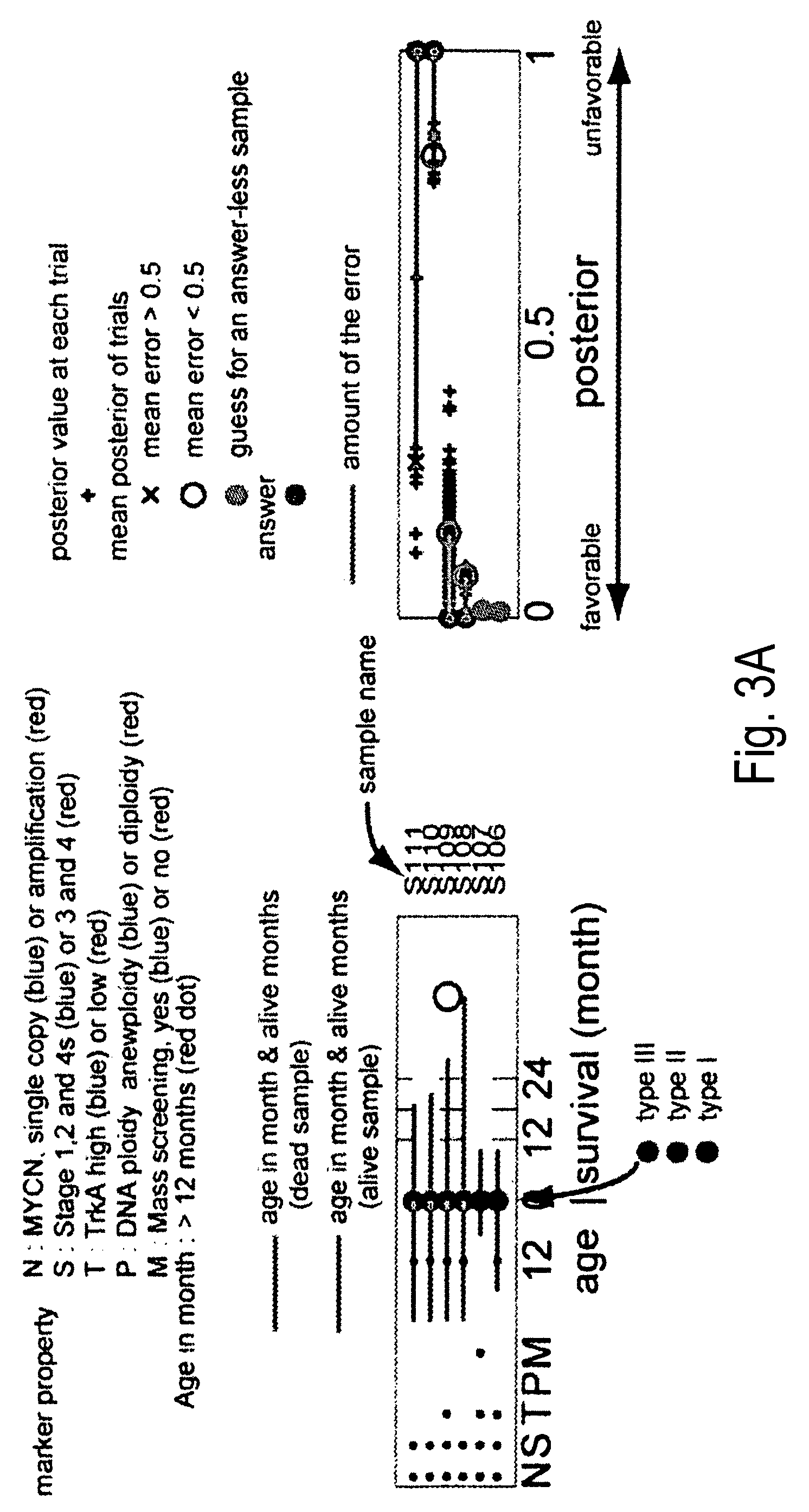Microarray for predicting the prognosis of neuroblastoma and method for predicting the prognosis of neuroblastoma
a microarray and prognosis technology, applied in the field of microarrays for predicting can solve the problems that the prediction of neuroblastoma diagnosis was not always accurate, and achieve the effect of accurate and convenient prediction of the prognosis of neuroblastoma
- Summary
- Abstract
- Description
- Claims
- Application Information
AI Technical Summary
Benefits of technology
Problems solved by technology
Method used
Image
Examples
examples
1. Materials and Methods
1-1. Patients and Tumor Specimens
[0072]Fresh, frozen tumor tissues were sent to the Division of Biochemistry, Chiba Cancer Center Research Institute, from a number of hospitals in Japan. The informed consents were obtained in each institution or hospital. Most of the samples were resected by pre-operational biopsy or surgery, without treatment by chemotherapy or radiotherapy. After the operation, patients were treated according to previously described common protocols (Kaneko, M. et al. Med. Pediatr Oncol 31, 1-7 (1998)). Biological information on each tumor including MYCN gene copy number, TrkA gene expression, and DNA ploidy, was analyzed in our laboratory. All tumors were classified according to the International Neuroblastoma Staging System (INSS): stages 1 and 2, localized neuroblastomas; stages 3 and 4, locally and regionally growing and distantly metastatic neuroblastomas; and stage 4s, neuroblastomas in children under one year of age, with metastases ...
PUM
| Property | Measurement | Unit |
|---|---|---|
| humidity | aaaaa | aaaaa |
| temperature | aaaaa | aaaaa |
| resistance | aaaaa | aaaaa |
Abstract
Description
Claims
Application Information
 Login to View More
Login to View More - R&D
- Intellectual Property
- Life Sciences
- Materials
- Tech Scout
- Unparalleled Data Quality
- Higher Quality Content
- 60% Fewer Hallucinations
Browse by: Latest US Patents, China's latest patents, Technical Efficacy Thesaurus, Application Domain, Technology Topic, Popular Technical Reports.
© 2025 PatSnap. All rights reserved.Legal|Privacy policy|Modern Slavery Act Transparency Statement|Sitemap|About US| Contact US: help@patsnap.com



